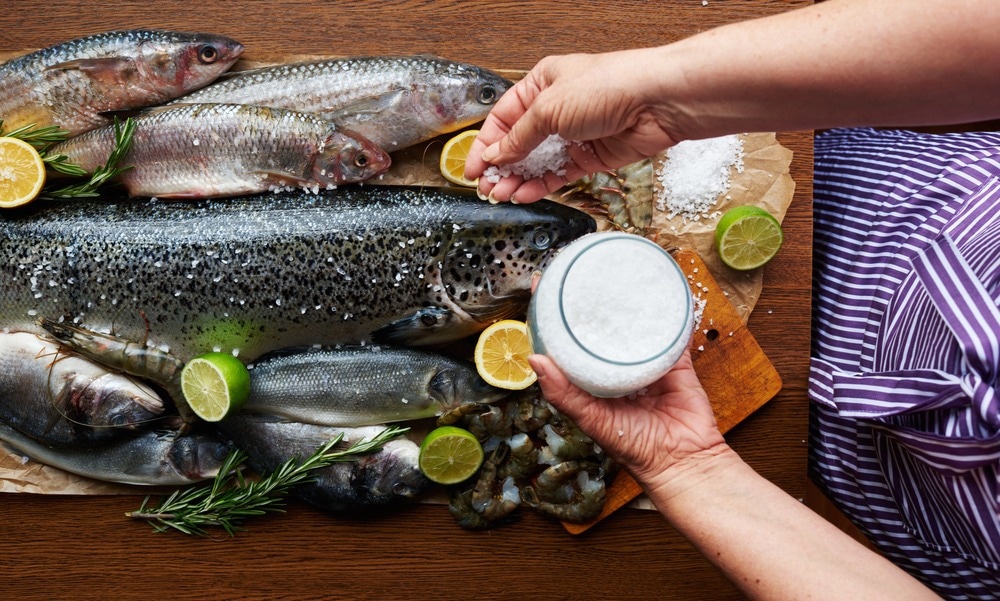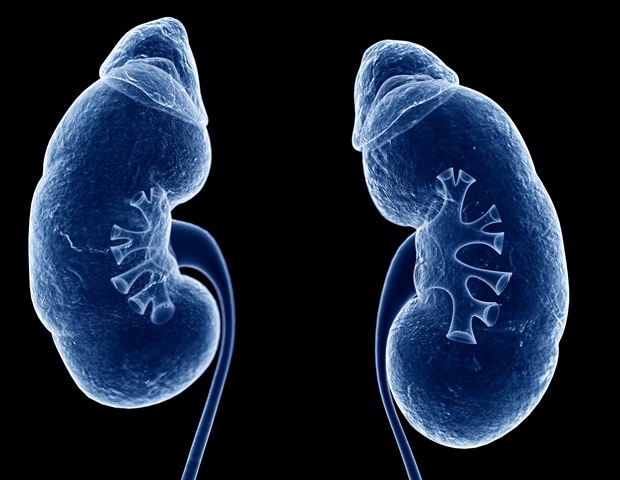In a contemporary find out about printed in Environmental Analysis, researchers assess a number of possible biomarkers for self-documented lean fish, fatty fish, shellfish, and general seafood consumption amongst pregnant feminine contributors of the Dietary Affect at the Immunological Maturation Right through Adolescence in Relation to the Atmosphere (NICE) find out about in Sweden.
 Learn about: Biomarkers of seafood consumption all through being pregnant – Pollution as opposed to fatty acids and micronutrients. Symbol Credit score: ESstock / Shutterstock.com
Learn about: Biomarkers of seafood consumption all through being pregnant – Pollution as opposed to fatty acids and micronutrients. Symbol Credit score: ESstock / Shutterstock.com
Background
Seafood is enriched with fatty acids, proteins, hint components, and nutrients, the consumption of which all through being pregnant may just toughen toddler building. A number of research have reported certain associations between day by day fish consumption all through being pregnant and neonatal cognition and beginning weight, which has additionally been inversely associated with the advance of eczema and meals hypersensitive reactions amongst babies.
Seafood consumption is most often made up our minds by way of examining questionnaire information; then again, questionnaire-based estimations is probably not very dependable. The provision of dependable seafood vitamin biomarkers may just additionally toughen the accuracy of measuring consumption measures and, because of this, analysis high quality.
Importantly, seafood may contain environment-polluting components reminiscent of arsenic and methylmercury. Alternatively, information on methylmercury as a seafood consumption biomarker are restricted.
In regards to the find out about
Within the provide find out about, researchers assess a number of possible seafood consumption biomarkers, together with selenium, long-chain omega 3 fatty acids (n-3 LCPUFAs), methylmercury, iodine, and more than a few compounds of arsenic amongst 549 pregnant NICE find out about contributors at 29 weeks gestation.
Docosahexaenoic acid (DHA), docosapentaenoic acid (DPA), eicosapentaenoic acid (EPA), selenium, methylmercury, iodine, trimethylarsine oxide, arsenocholine, arsenobetaine, general arsenic, inorganic-type metabolites, or arsenic ranges had been measured in urine and serum.
EPA, DPA, and DHA proportions in pink blood cells (RBCs) had been made up our minds the usage of fuel chromatography. Inductively coupled plasma mass spectrometry (ICP-MS) used to be used to decide selenium ranges in serum and RBCs, arsenic and mercury ranges in RBCs, in addition to more than a few arsenic-containing components and iodine in urine.
Arsenic-comprising components had been separated by way of ion trade involving high-performance liquid chromatography (HPLC). Biomarker information had been bought the usage of meals intake questionnaires that had been finished by way of the contributors at gestational week 34.
Biomarker ranges had been correlated with general seafood consumption and that of lean fish, shellfish, and fatty acid personally within the ultimate trimester. Pregnant women folk had been recruited between 2015 and 2018 from the Sunderby Health center positioned within the Norrbotten county of Sweden whilst present process common sonography at gestational weeks 18 and 19.
Best Norbotten county citizens who may just write and discuss Swedish and had been to ship within the Sunderby sanatorium had been integrated within the research. The preliminary urine and blood samples had been bought in week 29 of being pregnant. Knowledge on anthropometric and background variables had been retrieved from the beginning data.
Effects
A complete of 655 women folk had been recruited and after apart from 18 women folk with 2d pregnancies, 3 women folk who delivered twins, and one girl who withdrew earlier than find out about of entirety, 633 women folk had been eligible.
Alternatively, 599 women folk in the end equipped serum and urine samples, and seafood consumption information used to be legitimate for 554 women folk. The median values for player age and seafood consumption in overdue being pregnant had been 30.5 years and 26 grams/day, respectively.
The median consumption of fatty fish, shellfish, and lean fish used to be 9.1, 4.1, and six.6 grams/day, respectively. A number of the contributors, 55% ate up seafood a few times weekly, while the consumption of fatty fish, shellfish, and lean fish used to be one to a few occasions per thirty days amongst 44%, 47%, and 48%, respectively.
Best 4 of the contributors reported no seafood consumption all through the general months of being pregnant. Freshwater Salmonids like brown trouts had been ate up multiple time each and every month by way of 23% and 11% of contributors earlier than and all through being pregnant, respectively.
The corresponding percentages for freshwater predator-type fish, together with perch and northerly, had been 10% and three%, respectively, while those percentages for brackish water fish, together with Baltic herring, had been 21% and 12%, respectively.
Iodine ranges in urine had been 54% better amongst women folk who incessantly ate up multivitamins with minerals.RBC and serological selenium ranges had been additionally better amongst the ones eating multivitamin dietary supplements at 5% and 13%, respectively.
For girls who ate up multivitamins with minerals day by day, the full arsenic and arsenobetaine concentrations in urine had been 65% and 108% upper, respectively. The median quantity of seafood ate up by way of the contributors used to be 184 grams weekly.
Day-to-day seafood consumption confirmed essentially the most tough correlations with RBC mercury concentrations, comprising principally methylmercury, general arsenic content material in RBCs, and arsenobetaine in urine.
The biomarker components confirmed certain correlations with the intake of shellfish, fatty fish, and lean fish. RBC DHA and serological selenium ranges confirmed correlations, albeit susceptible, with principally fatty fish.
Amongst n-3 LCPUFA in RBCs, docosahexaenoic acid confirmed the best abundance all through being pregnant, with decrease ranges of docosapentaenoic acid and eicosapentaenoic acid. Pregnant women folk eating excessive quantities of seafood had considerably better ranges of the biomarkers, except for docosapentaenoic acid ranges in RBCs and iodine ranges in urine. Within the urine of girls with excessive seafood consumption, arsenobetaine, and trimethylarsine oxide had been 2.5-fold and three.5-fold better, respectively.
Conclusions
General, the find out about findings confirmed that the mercury content material in RBCs and arsenobetaine in urine may well be thought to be seafood intake biomarkers, as they correlated extra strongly as in comparison to long-chain omega-3 fatty acid ranges. Alternatively, the biomarkers’ relevance may range by way of the seafood form and quantity ate up.
Magazine reference:
- Stråvik, M., Gustin, Okay., Barman, M., et al. (2023). Biomarkers of seafood consumption all through being pregnant – Pollution as opposed to fatty acids and micronutrients. Environmental Analysis. doi:10.1016/ j.envres.2023.115576.
Supply Through https://www.news-medical.internet/information/20230310/Mercury-and-urinary-arsenobetaine-in-blood-are-strong-biomarkers-for-seafood-consumption-among-pregnant-women.aspx



